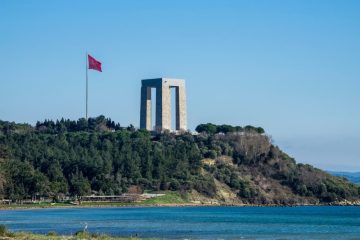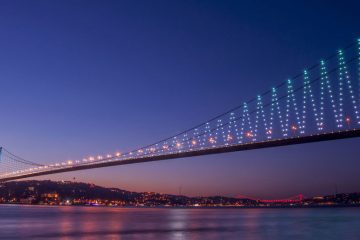You can see all the details about the Half Day Istanbul Tour below. If you have any questions or would like to make a reservation for the Istanbul Half Day Tours, you can call us on the number below, or click the Whatsapp button to send us a text message.
Contact us on Whatsapp
Quick Information about Half Day Istanbul Tour
| Programme 1 (Best Seller): | Morning City Tour: ( Between 08.45 – 12.30) Blue Mosque Hagia Sophia Hippodrome Grand Bazaar Tour Days: Monday, Wednesday, Thursday, Saturday 20 euros per person |
||||||
| Programme 2: | Afternoon City Tour: (Between 13.00-16.30) Topkapi Palace Hagia Irene Church Tour Days: Monday, Wednesday, Thursday, Saturday 45 euros per person (Harem is not included) |
||||||
| Programme 3: | Morning Bosphorus Tour: (Between: 08.45 – 12.45) City Walls Golden Horn Spice Bazaar Bosphorus on boat Tour Days: Tuesday, Friday, Sunday 25 euros per person |
||||||
| Programme 4: | Half Day Afternon Tour: (Between 13.00- 17.00) Beylerbeyi Palace Camlica Hill Shopping Tour Days: Tuesday, Friday, Sunday 35 euros per person |
||||||
| How to book? | You can write to us by Whatsapp or fill out the pre-reservation form. Then our sales representative will give you the other details. After making a firm reservation, your ticket will be sent to your mobile or email. You can take it on your mobile. No need to print. | ||||||
| Included: |
|
||||||
| El tour no incluye: |
|
Half Day Istanbul Tour
The Blue Mosque – Istanbul
The Blue Mosque (called Sultanahmet Camii in Turkish) is a historic mosque in Istanbul. The mosque is known as the Blue Mosque due to the blue tiles that surround the interior design walls. The mosque was built between 1609 and 1616 years, during the rule of Ahmed I. Like many other mosques, it also comprises a tomb of the founder, a madrasa and a hospice. As well as continuing to be used as a mosque, the Sultan Ahmed Mosque has also become a popular tourist attraction in Istanbul.
As well as being a tourist attraction, it is also an active mosque. It is closed to non religious entry for half an hour or so during the five daily prayers.
The best way to see the great architecture of the Blue Mosque is to approach it from the Hippodrome; the west side of the mosque) If you are a non-Muslim visitor, you must use this entrance to enter the mosque.
Istanbul Hippodrome
Byzantine emperors loved nothing more than an afternoon at the horse chariot races, and this rectangular arena next to Sultan Ahmet Park was their venue of choice. In its heyday, it was decorated with obelisks and statues, some of which remain in place today. Re-landscaped in recent years, it is one of the city’s most popular hangouts.
Originally the arena consisted of two levels of galleries, a central spine, starting boxes and the semi-circular southern end known as the Sphendome. Parts of these structures still stand. The galleries that once topped this stone structure were damaged during the Fourth Crusade and ended up being dismantled in the Ottoman period; Many of the original columns were used in the construction of the Süleymaniye Mosque.
The Hippodrome was the centre of Byzantine life for 1,000 years and Ottoman life for another 400 years, and has been the scene of countless political dramas. In Byzantine times, the rival ‘Greens’ and ‘Blues’ chariot crews had separate sectarian connections. Support for a team was similar to membership in a political party, and a team victory had important effects on politics. Occasionally Greens and Blues joined forces against the emperor, as was the case in AD 532 when a chariot race was disrupted by protests against Justinian’s high-tax regime. This escalated into the Nika Riots (named after the protesters’ cry of Nika! or Victory!), which led to tens of thousands of protesters being massacred at the Hippodrome by Imperial forces. Not surprisingly, chariot racing was banned for some time afterward.

The Ottoman sultans also kept an eye on the activities at the Hippodrome. If things went badly in the empire, a surly crowd gathering here could signal the start of a riot, followed possibly by a revolution. In 1826, the reformer Sultan Mahmut II carried out the massacre of the corrupt corps of Janissaries (the Sultan’s personal bodyguards). In 1909 there were riots here which caused the downfall of Abdül Hamit II.
Despite the ever-present threat that the Hippodrome would be the scene of his downfall, emperors and sultans tried to outdo each other in beautifying it, adorning the centre with statues from the far reaches of the empire.
Unfortunately, many priceless statues carved by old masters have disappeared from their original homes here. The main perpetrators of such thefts were the soldiers of the Fourth Crusade, who invaded Constantinople, a Christian allied city, in 1204.
Near the north end of the Hippodrome, the small gazebo with beautiful stones is known as the Kaiser Wilhelm Fountain. The German Emperor paid a state visit to Sultan Abdül Hamit II in 1898. He presented this fountain to the Sultan and his people as a token of friendship in 1901. The monograms inside the dome show Abdül Hamit’s tuğra (calligraphic signature) and the First Letter. of Wilhelm’s name, which represents his political union.
The immaculately preserved large pink granite obelisk of Theodosius in the centre was carved in Egypt during the reign of Tuthmosis III (1549-1503 BC) and erected in the Temple of Amon-Re at Karnak. Theodosius the Great (r 379-95) brought it from Egypt to Constantinople in AD 390. On the marble podium below the obelisk, look for carvings of Theodosius, his wife, his children, state officials, and bodyguards watching the chariot race. action of the kathisma.
To the south of the obelisk is a strange column sticking out of a hole in the ground. Known as the Spiral Column, it was once much taller and crowned by the heads of three serpents. Originally issued to commemorate a victory by the Hellenic confederacy over the Persians at the Battle of Plataea, it stood in front of the Temple of Apollo at Delphi (Greece) from 478 BC. C. until Constantine the Great took him to his new capital city around AD. 330. Although badly damaged in Byzantine times, the heads of the serpents survived until the early 18th century. Now all that remains of them is an upper jaw, which was discovered in the basement of Aya Sofya and is in the Istanbul Archeology Museums.
After the sacking of Hagia Sophia in 1204, the soldiers of the Fourth Crusade tore off all the plates from the Rough Stone Obelisk at the southern end of the Hippodrome, mistakenly believing they were solid gold (in fact, they were bronze covered with gold). of gold). . The Crusaders also stole the famous Triumphal Quadriga (team of four horses cast in bronze) and placed it over the main gate of St. Mark’s Basilica in Venice; The replicas are now housed there, as the originals were moved to the basilica for safekeeping. Hippodrome is included in the half day Istanbul tour.
Hagia Sophia
Hagia Sophia is included in the classic Istanbul tour. Hagia Sophia means “Divine Wisdom” in Greek. This was an orthodox church dedicated to the wisdom of the holy, not a Hagia Sophia as some people mistakenly call it today. The Turks call it Aya Sofya, It has been used as a Byzantine church, and then an Ottoman mosque. Now located in the Sultan Ahmet neighbourhood, it is one of the most important museums in Istanbul and considered a World Heritage Site by UNESCO. It is one of the best surviving examples of Byzantine architecture.
The first church of Hagia Sophia was built on the same site in the 4th century by Constantine the Great and renovated by his son Constantinus II in 360 AD. It was a small wooden church in Constantinople. Unfortunately, nothing was left of it because it was destroyed during a fire in 404 AD.
After the destruction, Emperor Theodosius II built a second and larger Hagia Sophia on the same spot in 415. This second church was also burned down during the Nika riots of 532 AD. Some of its columns, capitals and stairs can be seen today in the museum’s courtyard.
Half Day Istanbul Tour Final Stop: Grand Bazaar
The Grand Bazaar is included in the Istanbul Half Day Tour. One of the largest and oldest covered bazaars in the world, the Grand Bazaar is 30,700 square meters with more than 60 streets and alleys and 4,000 shops. The original historical core of the bazaar, İç Bedesten, was completed by Mehmet the Conqueror in 1461. A “bedesten” refers to an inner gallery with shops and there are several areas within the bazaar referred to by this name.
Over the years, the Grand Bazaar expanded from it’s original core, to become a roofed complex of thousands of shops, bordered by the inns and workshops of the merchants known as “hans”. According to the Ottoman traveller Evliya Çelebi’s Seyahatname, by the 17th century, the “Kapalı Çarşı” (or the Çarşı-yı-Kebir as it was known at the time) had reached its current size, with more than 4,000 shops and about 500 known stalls . In Turkish it is said as “dolap” (literally translated as “wardrobe”).












Tour Reviews
great tour
Leave a Review